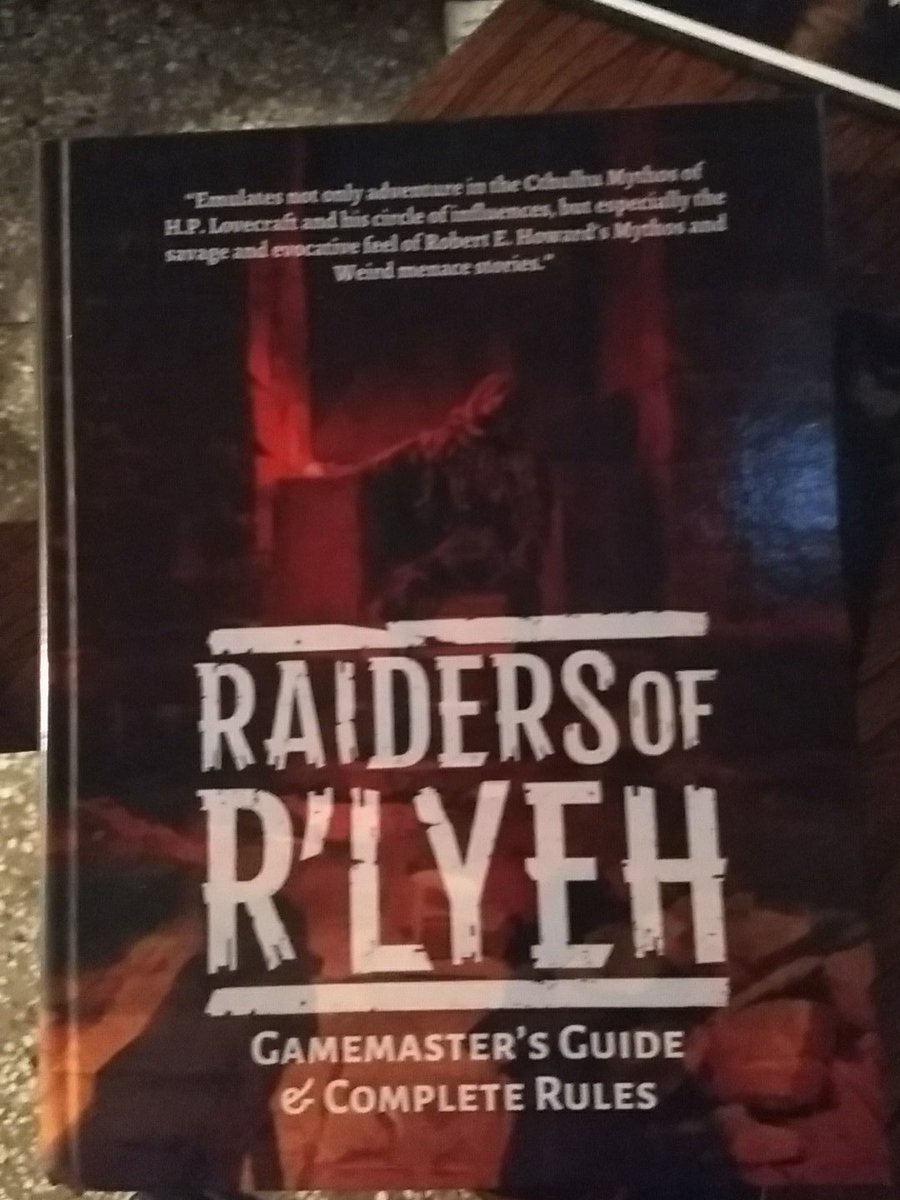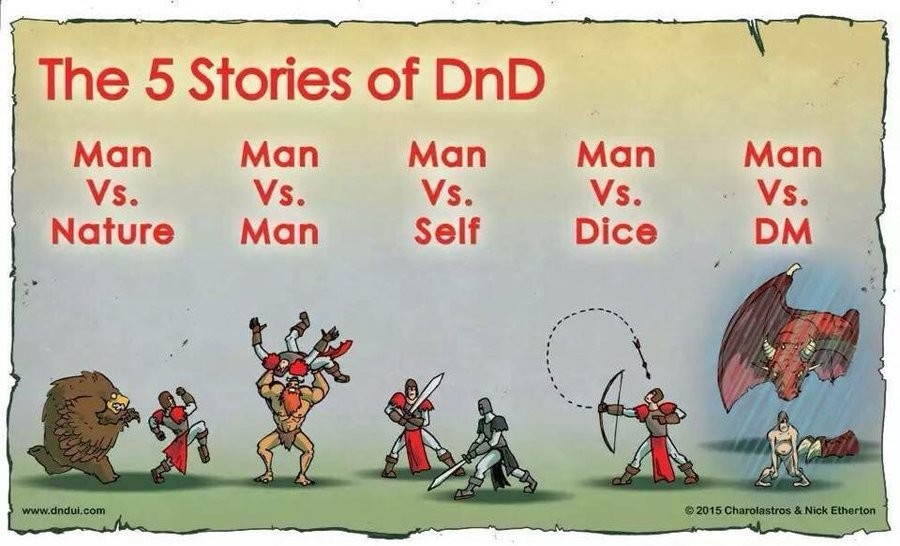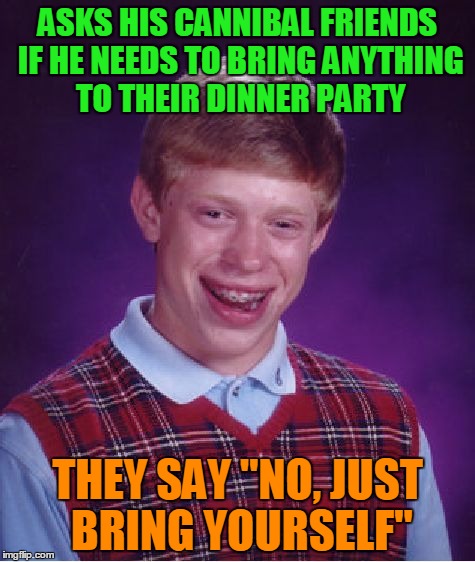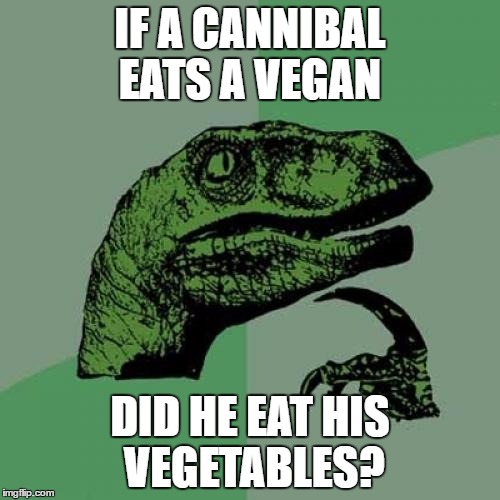In our last adventure, the PCs were almost ready to go to the Crown of Creation, to rescue G.O.D. from Sezrekhan, when they hit yet another stumbling-block: they can't open the gateway to the Crown until the opposite gateway (to the Qlippothic Nether-Regions) found in the lands of the Demon Zozzsz on the surface is shut down.
Now:
-"Has Sezrekhan cleaned his room?"
"Are we seriously arguing who in the DCC campaign is the Petersonian Superman?"
"Yeah"
"In that case, I propose BOLT-0."
"Huh. That makes sense."
-"Does power corrupt, or does power attract the corrupt?"
"It reveals what we are in the Darkness."
"Immunity to Magic Missiles?"
-"We have to shut down Zozzsz's gate to get to the Crown of Creation."
"So we just have to do what no one has been able to do in 1000+ years of trying, huh?"
"Great!"
-"Hey Republican Jesus, can I get a weapons' upgrade?"
"Last time you surrendered all your weapons without a fight to a guy with a pointed stick."
"Maybe we should just give the catboy a pointed stick, then?"
"That's what he deserves!"
-RJ gives the catboy a pink .28 pistol and a rape whistle.
"The vegomagus is blind so he can't see the catboy right now, but even he can sense his humiliation."
-"Can I get a scope for my AK-47?"
"Who the fuck are you, CNN?!"
-"Did you guys put my weapons for Republican Jesus to bless while I was unconscious?"
"Dude, we put YOU on the pile."
"oh, good!"
-"RJ, did you have a nuke in your weapons locker?"
"...who's asking?"
-"Harry, any help about how we end up dealing with the gate thing?"
"Well, I vaguely remember something in history class about you guys meeting a woman.."
"A woman?"
"Maybe.."
"Was it Laquanda?"
"Man, I'm glad Mu didn't live to see this!"
-"So between Goldhalcon and the lands of Zozzsz there's a big plain of glass?"
"Yeah, pretty much. I heard that's thanks to Bill the Elf. He nuked all the Furry lands."
"So he actually did something right."
-"So does Goldhalcon have something to do with the Halconlords?"
"I'm pretty sure they're unrelated."
"That's Goldhalcon's city motto... Goldhalcon: Unrelated to the Halconlords."
-"We could construct some kind of war-robot?"
"How?!"
"Hey, I know of a perfect Kobold Utopia that could help us.. oh wait, you all set it on fire!"
-The daemon-slaying sword is Detect-Magicked by the Vegomagus. It turns out to be a ridiculously powerful sword. It does quadruple damage to Daemons with a big bonus to hit. It can also create an explosive blast in a radius around the wielder 3 times a day.
"I don't tell Heidi about that last part."
"So is it a good sword?"
"Oh yeah! On an unrelated note, Heidi, don't think about exploding."
-The party decides they're going to go to Lol to try to find the answer to dealing with Zozzsz there.
"Who's going to take us to Lol?"
"Not Republican Jesus."
"Maybe Mexican Jesus?"
"He can't really teleport, but he's very good at sneaking into places where he's not legally allowed to be."
-In the end they decide to have Black Jesus take them down. They find Lol in a state of ruin, and they're inside an area enclosed by a big wall.
"What the fuck happened here?"
"...all is Sezrekhan..."
"Oh shit. I guess that happened."
"It's a Sezrekhan-zombie horde!"
-Some of the PCs take to the air in an attempt to escape the Sezrekhan-Zombies. The Catboy climbs up a building.
"What about Black Jesus? Can he fly?"
"No, but I can run my ass off!"
-While on a roof, Catboy gets ambushed by a Sezrekhan zombie!
"Do the rest of us see that happening?"
"Do any of you care?"
"..never mind."
-Catboy manages to kill his zombie and then Heidi flies by, grabbing him by the scruff of the neck and flying him to safety.
-Black Jesus teleports the group in front of the Citadel of the wizard's council. It's got barricades heavily-manned by guards.
"HALT! Who goes there?"
"It's me, Heidi, and Chancellor Roman!"
"I'm Vegomagus!"
-"What the hell happened here?"
"Everything is officially fine, by order of the Archemaster!"
"So I guess that's what happened."
-The Viking Wizard shows up to deal with the PCs.
"You are all being detained."
"Why?"
"We have granted ourselves emergency powers. We don't need a reason."
-When the PCs claim they're trying to save the world, and don't want to be detained, the Archemaster himself shows up in a puff of black smoke.
"Archemaster, we need your help!"
"You have the gall to come looking to me for help after what you did to me?!"
"What the fuck did we do to him...?"
"I don't know... oh shit, the video!! I forgot."
"Holy shit, the humiliation video! He's going to kill us. Black Jesus, save us! Get us out of here!"
"Shazam!"
-The PCs are back on the sun.
"Well, that didn't go well."
-"I see now why the Archemaster wouldn't help us, based on, you know, absolutely everything we knew of him."
-"I could try to convince him, you know... my old way."
"You could try that, Sami, but it might be risky."
"We'd use protection!"
"It wouldn't work, he likes innocent-looking women."
-"Is Republican Jesus here?"
"Nope, he's not in this room."
"Is he in the hydroponics lab?"
"Maybe, or he's doing other Republican stuff. You know, cleaning his gun, hating the poor..."
-The PCs come up with a new plan. Thinking that, based on Harry's hazy recollection of future history, the 'woman' who helps them might be Lady Halcon (who conquered the lands south of the formerly-furry-plain), Sami does a Divine Aid to locate her. Black Jesus teleports them there.
-They teleport to a cold grassland, where Lady Halcon is marching with a band of over 90 Halconlord soldiers. She's a powerful-looking warrior woman, with bright red hair, a chain mail and halcon-mask that's standard to higher-ranking Halconlords, and a cybernetic leg.
"Oh shit, it IS Sandy the Chain Mail Barbarian!"
"Too bad none of our current PCs knew her."
"Or, you know, lucky that."
-The Halconlords are suprised by the PCs' sudden arrival and draw weapons. Initiative is rolled.
"Vizi you go first."
"Do you try to seduce her?"
"Are you crazy?! The amount of weed I'd have to smoke to think that's a good idea would probably kill me!"
-Sami was right next to Lady Halcon, and Lady Halcon stabs her right through the armor, hitting her jetpack and making it activate to send her flying through the air!
-"Oh shit! Get us out of here!"
"Shazam!"
-The party, except for Sami, end up back in the sun.
"Well, that didn't go well either."
"I think we have to go back. She's our healer."
-Sami teleported herself using divine aid, but there's some sort of error and she ends up in some mountains.
-The rest of the party teleports back, but at a safer distance.
"Stop! We're not here to fight!"
"You're destined to help us defeat Zozzsz!"
"I have been chosen by the Ribond to defeat Zozzsz"
"yes, that's exactly what we meant."
-Harry gets dangerously close to Lady Halcon, and whispers something to her, and suddenly she agrees to team up with the gang.
-Sami is totally lost in the mountains, repairing her jetpack, and then she gets ambushed by Mountain Goblins.
"What the hell are mountain goblins?"
"They're like regular goblins but wear lederhosen and alpine hats."
-Sami interrogates the Mountain Goblins.
"Where am I?"
"Near Goblin-home."
"What continent?"
"What is continent?"
"I just hover away from them."
-That night, the party and the Halconlords are distrustful, but something happens that evening and by the next morning Lady Halcon has had some kind of a 'vision' where she says that they are meant to find a scroll that will take down the field of darkness.
-Black Jesus manages to find Sami and bring her back with the party.
-Sami thinks that there must be some way to break the mental control the "Ribond" has over Lady Halcon.
"There must be some kind of kill-switch..."
"Maybe."
"I have a kill-switch!"
"What's your kill-switch, Vegomagus? Killing yourself?"
-The PCs find out that they even once the Field of Darkness is taken down, they'd need to find the Derpy Horse of Destiny in order to destroy the gate.
"Well, we should have gotten the horse first then!"
"We know where the scroll is. And anyways the scroll can't run away from us, or die."
"We don't know that, it's been a weird year."
-"What's the hardest thing you've ever slain, Lady Halcon?"
"I've slain many things, none of them were very hard."
"Sami has slain some very hard things.. hehe."
-"I'm starving for female friends. Anema is a ditz and Lady Halcon is a humorless dick."
"You have me!"
"Great, my closest female friend is the catboy."
"What about the Vego-magus? He's a soy-boy!"
-As they wander through the barren plains the border the frontier of Zozzsz's realm, they find a solitary cage with a guy inside.
"Who are you and why are you in here?"
"Oh hey! Boy am I glad to see you guys! My name's Lenny. I'm a thief."
"Oh good! We don't have a thief!"
"Hey!"
-"Just in case, I'm going to Detect Evil on Lenny."
"Lenny is a little bit evil."
"What does that mean? Like, what about the Vegomagus?"
"The vegomagus is also a little bit evil."
-"The cage Lenny is in is made of bone?"
"Yes"
"I take some of those bones for summoning!"
-"So the Vegomagus doesn't actually have any food with him in his equipment?"
"Nope."
"So he's going to starve to death?"
"Can't he eat grass?"
"He's a vegan, not a cow."
"I have some nutri-bars, vegomagus.."
"Oh thank god."
"..yeah, but they're mine, so... sorry!"
-The party reaches the border of Zozzsz's realm. Black Jesus can go no further, as the power of chaos acts as a barrier against celestials.
"Good luck, guys."
"Yeah, you too... man, I was about to call you 'BJ' like we call Republican Jesus 'RJ', but that's not really a good nickname..."
"Yeah.. I'm gonna go now..."
-The PCs reach a cracked Elven Dome.
"You know, I don't think any current PC has ever seen a normal elf."
"This is the world of the Last Sun. NO ONE has ever seen a normal elf."
-As soon as the PCs arrived they are a mobbed by a group of impoverished-looking hipster elves in rags, who try to hit them up for charity 'causes', patronage for their feminist comics, and selling them 'Hipster Elf BBQ'.
-"None of the Dome's machines are working. Could we fix them?"
"We could, but why bother?"
"To do good?"
"I don't think allowing these elves to give would really do any good."
-Hipster-Elf-style BBQ is really pathetic.
"What's this meat?"
"It's hill chinchilla"
"...It's rat, isn't it?"
"OK, yes, but it's Organic rat!"
-"I look around to see if there's any great wizards here"
"You're pretty sure everyone who was even a little bit competent has long since abandoned this dome to its destruction."
-"I feel bad for these people."
"You could help me make feminist comics!"
"I'm over it now."
-"Zozzsz may send Wraith Princes after you."
"Are you saying, like, one female wraith princess? or.."
"No, multiple male wraith princes, not that it matters."
"That's so sexist."
"What?"
"Woman wraiths can have penises, you know!"
"OK, yeah, these Hipster Elves aren't worth saving."
-That night, the PCs rest in the ruins of an old internet cafe inside the dome. On the third watch, Lenny goes off to the 'bathroom', and a few seconds later the hipster elves are screaming and fleeing to the dome's Safe Space.
"OK, guys, Lenny did something."
-The PCs see Lenny running toward them, screaming in a panic.
"ORCS!"
-"OK, you guys, roll initiative... Heidi? Vegomagus? Catboy? Vizi? Roman?.... Roman?... oh wait, shit, he's an NPC! I'm Roman!"
"Holy fuck, Grandpa GM is losing it!"
-Lady Halcon decapitates one orc, runs through number 2, stabs a third in the gut and kicks number 4 to death.
"Holy shit!"
"She killed half the orcs in one round!"
"I feel inadequate."
-"Alright then miss-show-off, it's my turn!"
"You hit and injure one orc."
"I'm helping!"
-The party kills off the orcish scout party. While they're looking for others, Sami notices Lenny cutting off a piece of Orc flesh and putting it in his bag.
-"Psst, Vizi, keep an eye on Lenny. I think he's suspicious."
"Oh?"
"He may be a cannibal."
"That's OK, I guess."
"Well, yeah, I mean it's not ideal but we still need a thief."
"Hey!!"
-"Um, Vizi? I'm going to the bathroom."
"I'm going with you."
"But... I have a shy bladder."
"I don't care, I'm going with you, and I'm going to watch you pee. Not in a gay way, though!"
"Oh, um, no that's OK. I'll just hold it in."
"No. Now you're going to fucking pee!"
-Vizi tries to get Lenny to confess.
"We don't care what your secret is. Our cleric is an ex-hooker! We have a vegan who is still a vegan, a catboy who's a pussy, and we used to have a hippo."
-"OK, fine! I.. I'm a cannibal."
"Oh, that's OK."
"...really?"
"Yeah, it's OK."
"Wow."
"We have a fucking vegan in our group. How could this be worse?"
-"Wow, thank you! I SWEAR I'll try my very best not to eat any of you!"
"Sure. I mean, if I die you can eat me."
"You mean that? I.. I'm so touched by that!"
"Sure. Just don't eat my dick."
-Lenny confesses to everyone.
"I'm sorry I kept it from all of you. I was just really worried that if you knew I was a cannibal you wouldn't like me anymore."
"We don't really like you either way, so nothing has changed."
-"When I left earlier, I was going to go eat an elf. But then the orcs showed up. So I guess it all worked out."
"You're right, it did all work out! See? That's what happens when you share!"
-The next day the party leaves the dome and continues their march. They run into a group of 8 half-starved rebels in the hills, hiding poorly.
"Hey you!"
"Who are you?"
"We're the Rebellion!"
"Against Zozzsz?"
"Yes! Have you come from the south?"
"Sure. That's also where things usually go when we're around."
-"I'm Bort, leader of this rebel cell."
"What kind of name is Bort?"
"It's a perfectly normal name!"
"No it isn't!"
"Dude, what the fuck? Your name is 'catboy'."
"Catabra, actually."
-"I'm a blue mutant too! These are my people. Except for that green guy there. No offense."
"None taken."
-The rebels are disappointed to learn that the PCs are not the vanguard of some great army.
"How do so few of you hope to defeat Zozzsz?!"
"Ask us once we've done it."
-Sami is still complaining about her lack of female friends.
"Hey, I'm very egalitarian. My female NPCs are just as fucked up as my male NPCs."
"True."
-"I just did my first backstab ever, at level 2!"
"That's not something to brag about, catboy."
-The PCs reach the ruins, and manage to find a trap door hidden under some rubble. Neither Catboy nor Lenny manage to get it open, so Heidi flies into it at high-speed, breaking it and revealing a winding staircase descending into an apparently-intact dungeon level.
And that's where we decided to stop, so we could start with the dungeon next session. Will the PCs find the mysterious scroll that can destroy Zozzsz's Field of Darkness? Stay tuned to find out!
RPGPundit
Currently Smoking: Lorenzetti Poker + Solani Aged Burley Flake






















.jpg)
_contrasted.jpg)

